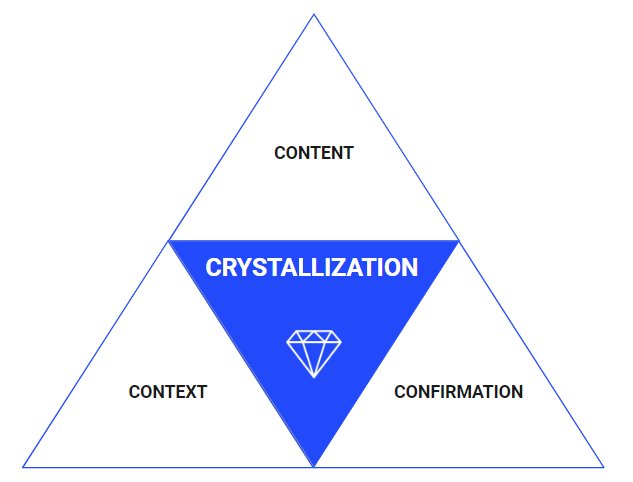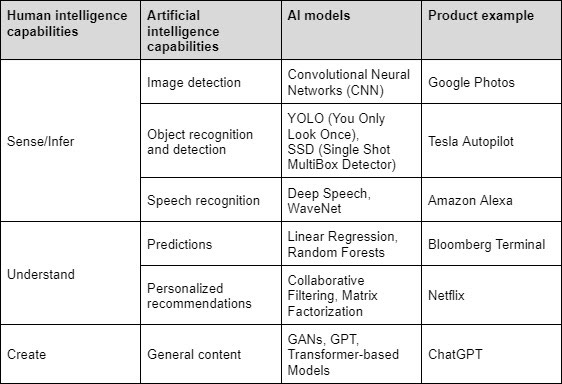Learning AI skills by using AI skills
For those of you who read last week’s newsletter, you’ll know we’re trying to do something a little different here. Rather than just being another AI newsletter, repeating the same headlines or sharing the same jobs, we want to give you something more useful, something that’ll make a real difference in your job.
We aim to create something to help you crystalize what you’re learning, going beyond knowledge to build practical skills that you can apply every day of your professional career.
At Product Faculty, we’ve found the best way to solidify these skills is with these three components:
Content
Context
Confirmation
Each issue of the newsletter will give you the content, covering the entire lifecycle of building AI products. However, simply reading each newsletter from front to back isn’t necessarily going to give you the skills you need to take your career to the next level.
For that, you’ll need the other parts – context and confirmation.
Originally, a lot of the material we’re covering in this newsletter was part of our AI Product Management online course (read to the end to find a special newsletter-only discount to join our next cohort). In a course environment, context came from actively engaging with fellow product managers on a regular basis.
While it’s difficult to replicate this in a newsletter, we encourage you to find other product managers who are also interested in implementing AI. Share your ideas, your successes and your failures. Having someone else on a similar path who you can talk with and discuss these new approaches with will help you see things with fresh eyes.
You can also reply to this email (or any of our future newsletters). We’d love to hear your thoughts, what you’ve found helpful and what particular topics you’re interested in. Not only will this help us provide more relevant and useful information, but it’ll also help build that sense of context.
You are not alone in this journey.
Additionally, we encourage you to fully commit to the learning experience. At Product Faculty, we require all students to keep their cameras on throughout the sessions. It may seem like a strange idea, but time and time again we’ve found that the students who keep their cameras on are more engaged. As a result, they get the most out of the class.
Obviously, we’re not asking you to keep a camera on you while you’re reading this newsletter, but the same principle applies. Most of us have gotten a little too used to multi-tasking, trying to get work done while our social media is pinging away or the TV is on in the background. If we’re honest with ourselves, we know that isn’t the best use of our time.
Make the decision now to be fully present as you read each issue of this newsletter.
Finally, we have confirmation. Learning the theory around AI in product management is a good start, but without the ability to practice what you’re learning, it’s unlikely to stick.
That’s why we’ll regularly include exercises in the newsletter, to help you put what you’re learning into practice. By applying your newfound skills, you’ll be able to cement what you’re learning and see actual results.
As part of those exercises, you’ll put together your own capstone project. Over the weeks, you’ll be able to create an AI-powered feature that utilizes what you’ve learned and applies it in a practical way that has the potential to make a significant difference in your customers’ lives.
The purpose of the project is to prepare you for the real-world challenges in the tech industry. We’ll take you through the process of building an AI feature from start to finish, so you can do it yourself, for your own products, without requiring any additional help from an engineer.
You’ll have a better idea of what you need to do at each stage and the issues you might face along the way, so you have the confidence to develop the strategy, design the capabilities and then test what’s going on.
As a sneak peek for what’s to come, expect to learn:
Understanding AI and product management
Ideation and conceptualization
Design and development
Testing and iteration
Before we start on any exercises or projects though, we need to understand why AI has become such an important topic.
The age of AI tools is now here
Every so often, a tool comes by that revolutionizes the way we live and work.
Think about the changes brought about by electricity, the internet and mobile phones. At some point, each of these was a brand new tool, yet their adoption curve was exponential.
Why?
Because of their potential for significant value creation, for people, businesses and our society at large
While the adoption of these tools was exponential, it still took decades for them to reach the point where they were readily available and usable by people in general.
For example, Arpanet delivered its first message from one computer to another in 1969, yet it took until 1991 for Tim Berners-Lee to introduce the World Wide Web.
For AI, this revolution is happening in a much shorter time. While ChatGPT was launched less than two years ago, multi-billion dollar companies have adopted it as part of their daily workflow.
For example, Klarna has been making wide use of AI, especially with their support assistant. By triaging support and handling low-level requests, Klarna has significantly reduced customer service workloads, handling two-thirds of customer service chats and doing the work of 700 agents.
In February 2024, Klarna announced that its AI assistant had managed 2.3 million conversations across 35 languages, addressing customer service and finance questions — in just one month.
Another company making waves is Cognition, which created the first AI software engineer. Companies can use the technology to scale out their software engineering team with an AI that can do everything from reading a ticket to deploying and testing software.
These are just two examples, but we’re seeing new companies with new use cases every single day. A lot is happening in a very short period of time.
Human intelligence vs. Artificial intelligence
AI is a field of computer science that enables machines to perform tasks typically requiring human intelligence.
AI is still in its early stages of mimicking human intelligence, but it can already emulate certain capabilities like sensing, understanding and even creating.
AI achieves this by using different models – complex mathematical equations and algorithms that process data to output actions, resembling human intelligence.
There are hundreds of models, each with a different interpretation of the world, each designed to optimize different aspects of human intelligence.
These models power many popular consumer-facing products today, some of which have become so familiar that we don’t notice them anymore.
We’ll leave it there, but next time we’ll see more about the different categories of AI and how we can use it in our work.
Time to apply what you’ve learned
Let’s keep it simple for now. Start by thinking about the products you’re currently working on and how they potentially could be improved with AI.
Alternatively, if you’re curious about branching out into a different industry or sector, you can try something completely different. Every industry has its own unique challenges and opportunities for AI, so it’s worth exploring various sectors to spark your creativity.
Consider how AI could enhance user experiences, streamline operations or solve persistent problems in fields like healthcare, finance, e-commerce or travel.
The key is to identify pain points or inefficiencies in a given domain and then brainstorm how AI could address these issues.
Remember, to get the most out of this newsletter, fully commit to these exercises. Take your time. Open up a document or get out the pen and paper, and start sketching out some ideas.
Don’t worry about the technical details or whether it’s feasible or not (at least for this step). Fundamentally, you’re asking just one question:
“How can I enhance the user’s experience for my product today?”
The goal isn’t just to add AI for its own sake, but to create meaningful improvements that add value for users and businesses alike.
That’s all we’re going to do as a first step. However, in future newsletters we’ll work our way through:
Understanding the space and customer problems
Building a functioning prototype
Evaluation and testing
Extending the available data
Remember, AI is a powerful tool, but it’s only as good as how you apply it. As we progress through future newsletters, you’ll gain the knowledge and confidence to bring AI into your products in a way that creates real value.
For now, start small, explore the possibilities and get ready to dive deeper into AI’s transformative potential in the coming weeks.
P.S. Want to take your product management career to the next level with the latest in AI knowledge? Check out our #1 rated AI Product Management certificated course on Maven. You’ll get the latest insights on how AI is affecting product management, direct access to us for questions and feedback, and an active community of like-minded product managers.
Enjoy your newsletter-exclusive $250 discount with this link.
What did you think of today’s email?
- 😊 Loved it 🧠🧠🧠
- 😐 It was ok 🧠🧠
- 😞 Terrible 🧠






